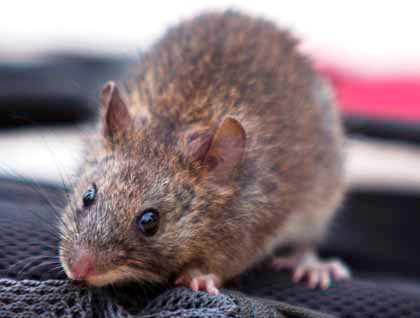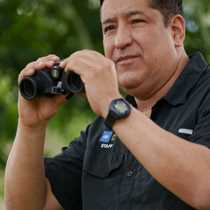So far so good! This expedition has been great. A brand new day found us in front of one of the little hidden treasure islands of the Galapagos archipelago, South Plaza Island. This small island, which is only some few hundred yards long, was once part of the ocean floor. The amount of wildlife on this paradise is overwhelming. A striking marine landscape dominated by a cacti forest surrounded by a surreal red carpet where colorful Galapagos land iguanas (Conolophus subcristatus) were seen roaming free everywhere. Several iguanas were observed while eating the spiny, but juicy, cacti pads. There is something remarkable in the presence of countless burrows that are used by land iguanas to “thermo regulate.” Reptiles cannot sweat, therefore they have to use external mechanisms to regulate their body temperature. In simple words, these ant-diluvian looking creatures are cold blooded, meaning that they have to control their body temperature using the burrows either to warm up in the heat outside their shelters when cool, or going inside to reduce their body temperature from the rough hot conditions typical of the dry locations where they live. On the island there are several Galapagos sea lion colonies as well. Some big sea lions were seen searching for the best position for napping while some juveniles were either exploring or playing in the surroundings.
Further inland there is a spectacular cliff side where many sea birds species can be observed. Once we arrived to the highest point to walk along the cliff, we found the best site to watch sea birds in action. Galapagos shearwaters were skimming the ocean surface looking for food, Blue and Nazca boobies were also gliding along the cliffs plunge diving for food as well. Swallow tailed gulls were seen either flying around or taking care of their hungry youngsters. Occasionally, frigate birds were seen gliding in the blue sky.
After this magical morning visit we went back to the ship to join a presentation. As a biologist I had the pleasure to talk for around an hour about one of my favorite subjects, Charles Darwin. After lunch we had some downtime before starting the afternoon’s activities. Soon after, it was time to get ready for kayaking along Santa Fe Island. In this remote location there is striking scenery where huge volcanic cliffs are filled with giant prickly pear cacti. Some guests opted to go snorkeling and they had a blast as waters were very calm today and many colorful reef fish species were seen, including many rays.
Once everyone was back onboard we put on our walking outfits to explore the trails of Santa Fe Island. The landing beach is home to many Galapagos sea lions that were the delight of their observers. The rocky inland trail led us to encounter some pale brownish green land iguanas, the famous Santa Fe land iguana (Conolophus pallidus). This latter species, as is name implies, in only found on this small island, nowhere else in the Galapagos.
A very peculiar and rather rare event took place today. On Santa Fe Island there is a Galapagos endemic rat species, the Santa Fe rice rat (Aegialomys bauri). Every time we visit this island we look all over trying to locate this rarely seen mammal species and today one of the groups witnessed a rare sighting.
One of these rare rodents was so curious that its teeth were trapped in the mesh pouch of the backpack of one of our guests. With patience and amusement the little animal was liberated using a pocket knife. This made a great impression on our guests this week.
The Santa Fe rice rat is eminently vegetarian. It is a fearless creature that normally comes out at dusk or at night. This afternoon was a rather gloomy one, therefore some rats were seen. This was a fantastic and unforgettable sighting of one the least known animal species of the archipelago. The picture that Walter Perez took today is the first ever published in our daily expedition reports!
We finally came back onboard with the inner feeling that we were privileged to spend a whole day in this paradise visiting two small, but meaningful, islands that showed us the beauty of life.







